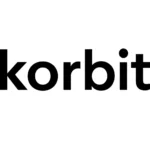Wistron Corp. approved a $45 million (NT$1.32 billion) capital injection into its wholly-owned subsidiary WisLab EMS Corporation, as Taiwan’s contract electronics manufacturer prepares for expanding artificial intelligence server production in the United States.
The board also authorized spending up to $55.9 million (NT$1.64 billion) to upgrade existing facilities at the company’s California plant, which CEO Jeff Lin said will transition from medical and industrial control products to AI server development, testing and manufacturing.
The investment comes as President Donald Trump has threatened tariffs on computer chips and semiconductors, potentially affecting Taiwan’s technology sector. Trump announced a 32% tariff on Taiwanese goods in April before reducing it to 10%, though semiconductors remain temporarily exempt.
Lin emphasized that the company’s Texas facility will begin AI server mass production in the first quarter of next year as originally planned, despite trade uncertainties. The executive noted that customers haven’t requested order adjustments, allowing Wistron to maintain its production schedule.
The company has prepared multiple contingency plans to address potential supply chain disruptions, according to Lin. Wistron’s global manufacturing footprint spans Taiwan, Southeast Asia, the Americas and Europe, providing operational flexibility as trade tensions persist.
Wistron plans to allocate NT$35.5 billion ($1.08 billion) for AI investments in 2025, representing a 77% increase from the previous year. The company expects AI-related products and servers to account for more than 50% of revenue next year, up from 40% currently.
The manufacturer joins other Taiwanese electronics companies relocating production to the US. Quanta Computer announced a NT$1.15 billion investment to expand US production the same day, as firms adjust to Trump’s trade policies.
While PC production remains in Asia for now, Lin indicated the company maintains flexibility to adapt manufacturing locations based on market conditions and regulatory requirements.




